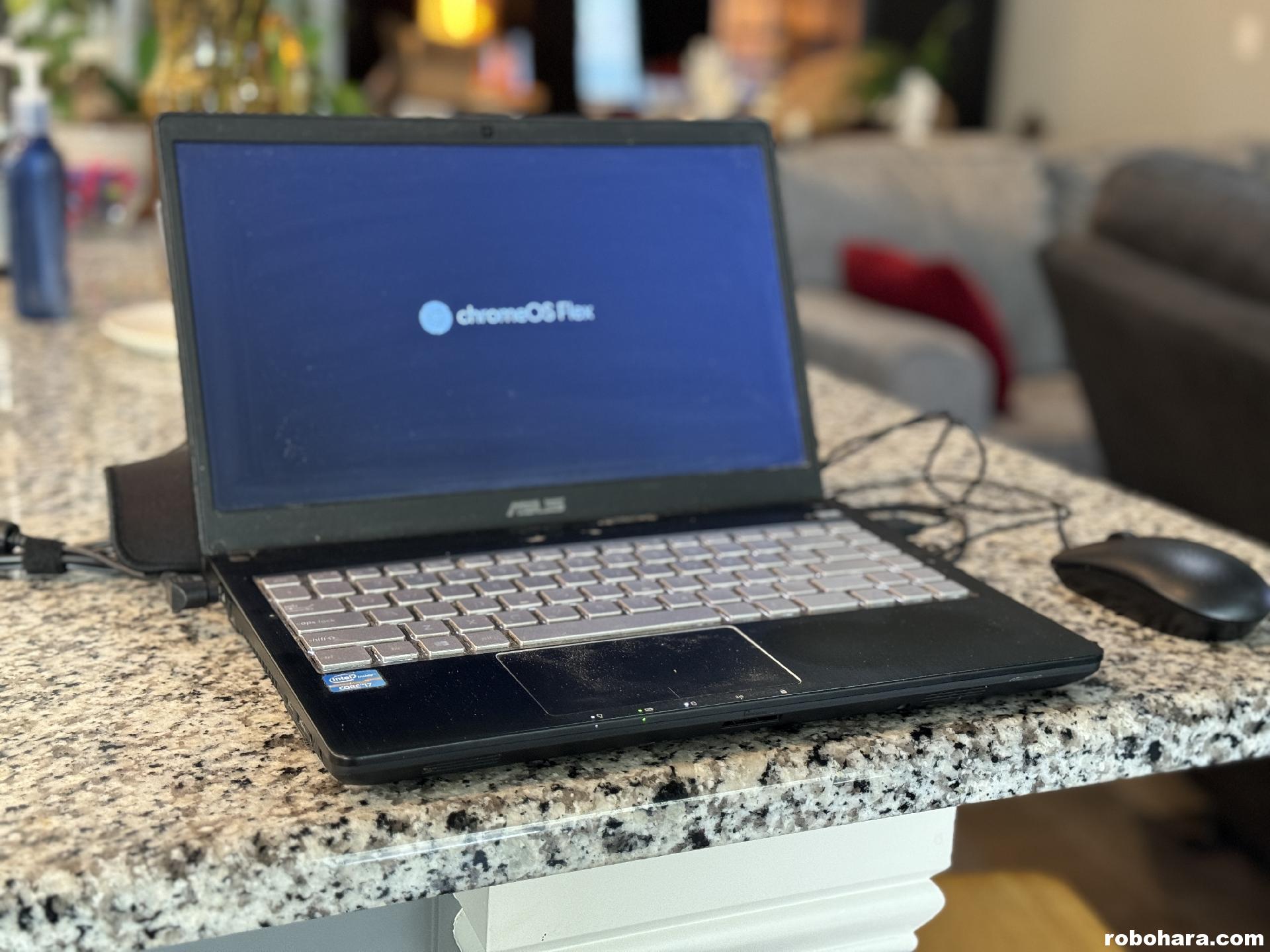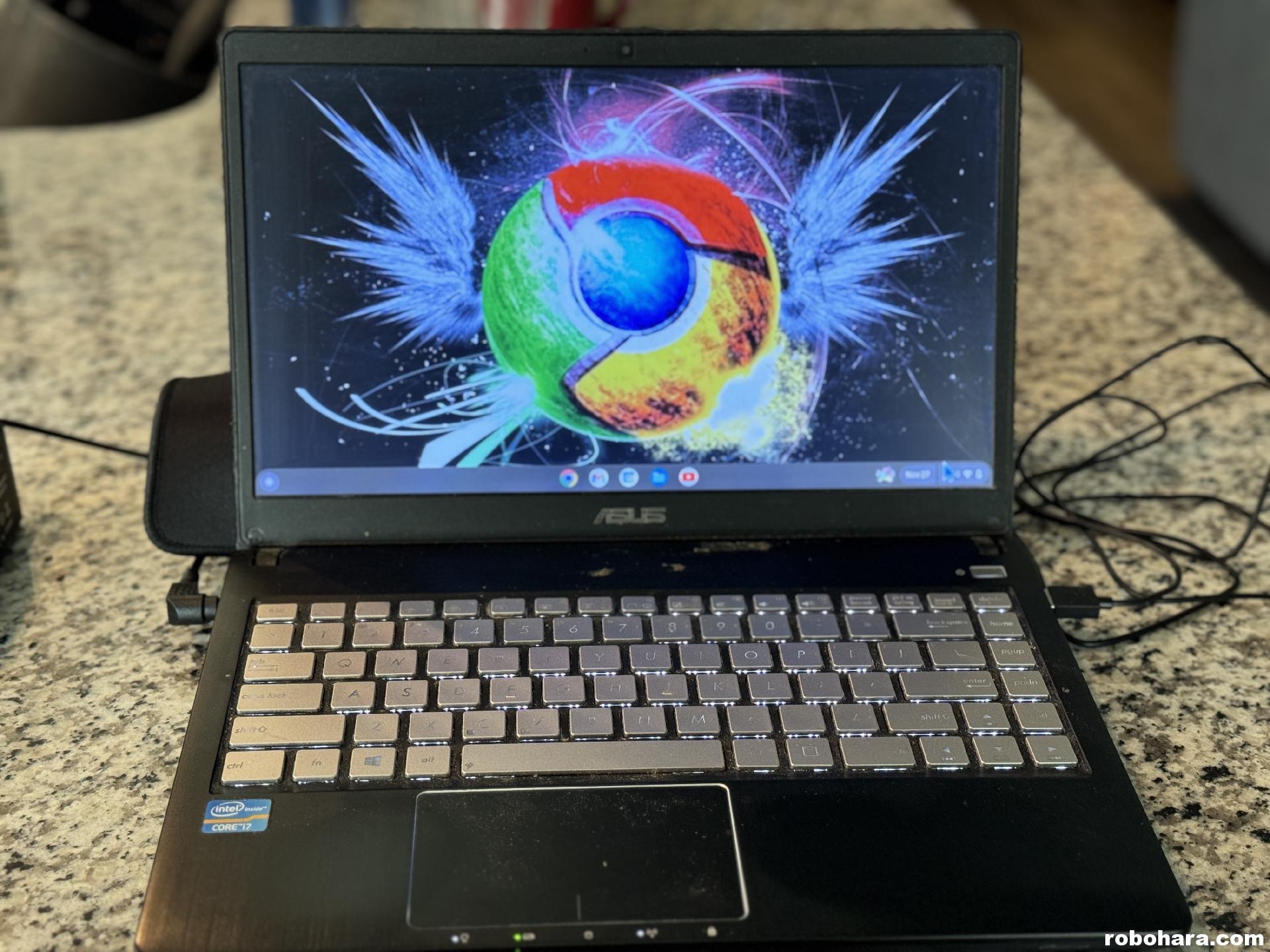
I have a hard time parting with old laptops, especially when there’s nothing wrong with them other than the fact that Microsoft Windows has expanded past their capabilities. The typical response you’ll get from nerds like me when this happens is “install Linux on it,” which is not a one-size-fits-all solution and, at a minimum, requires familiarizing oneself with a completely new and often confusing operating system.
Recently I found another solution: Installing ChromeOS Flex.
ChromeOS is an operating system developed by Google that runs on Chromebooks. It is a very lightweight operating system that relies heavily on having access to the internet. Last year, Google created ChromeOS Flex, a variation of ChromeOS designed to run on traditional x86 PCs.
I won’t bury the headline; both ChromeOS and ChromeOS Flex were designed with Google products in mind, and you’ll need a Gmail account to even log in to the machine. If you are anti-Google or are already trying to imagine ways to circumvent those limitations, ChromeOS is probably not the solution you’re looking for. ChromeOS Flex was not designed with tinkerers in mind. Instead, it is a very thin operating system designed to give users access to the internet.
I currently own an Asus laptop that I purchased back in 2013. It has a third generation i7 2.2GHz processor which ran Windows 7 stunningly, did okay with Windows 10 for a while, and has no chance of running Windows 11. It’s old enough that I replaced it about five years ago, and replaced the replacement earlier this year. The Asus was relegated to a shelf in the garage. It’s too slow to keep up with windows, and works too well for me to throw it away.
Last weekend I decided to give ChromeOS Flex a go and see if it could turn my abandoned Asus into a usable machine again. ChromeOS Flex is free to download and comes in a .IMG file that must be extracted onto a USB memory stick. Once a machine is booted from the memory stick, users have the option to test drive the operating system and run it from the USB stick without altering the machine’s hard drive (just like a Linux Live Distro), or fully commit and install ChromeOS Flex as the primary operating system, wiping out the computer’s hard drive in the process. My Asus laptop hadn’t been turned on for months, so I had little to lose by going all in.
The full installation took about ten minutes and the end result was an operating system with… not much to see. After logging in with my Gmail account I was presented with a toolbar with links to Gmail, Google Chrome, Google Docs, YouTube, and a couple of other links I immediately deleted (Google Messenger). There’s a button that links to any local music and video files you may download, and a settings area that allows you to tweak things to your liking. ChromeOS Flex feels like a combination of Windows, Macs, Linux, and my iPhone all mashed together. Options were just kind of where I imagined they would be, and I was able to find everything I was looking for without much stumbling.

Without the ability to install apps except for what’s available in the Google Chrome Store, I felt a little lost. What could I do with this computer? And then I realized… just about everything I do. Anything you do in your browser can be done on a Chromebook. You can watch YouTube videos, surf the web, or do anything else you do in a browser. With the Drive app you can write documents using Google Docs, work with spreadsheets with Google Sheets, and create slideshows with Google Slides. All of those documents will be saved in your Google Drive, which means you can access them from any computer using your Gmail account. Things like Spotify and Plex, which I typically access through an app, can just as easily be accessed through a browser.
I’m no expert on games in the Google store, although there certainly seem to be a lot of them. Modern off the shelf games are not going to work with ChromeOS Flex. It does have the ability to install a virtual Linux machine and sideload games and apps… but again, if that’s important to you, why not just go with Linux?
One nice thing about ChromeOS is that updates install very quickly and, to my knowledge, there have been no viruses that target ChromeOS/Flex. All that nonsense with drivers and patches and upgrades and antivirus is immediately removed. ChromOS Flex is also a very light operating system. All the sluggishness I was previously experiencing on this computer before I retired it is gone. It takes about a minute for the computer to boot, and once you’re logged in everything is ready to go. Another benefit is that by design, you’ll be mostly working with files and things in the cloud. It’s less like a traditional computer fill of files and more like a phone or a tablet. If this laptop were to die tomorrow, I could install ChromeOS Flex on another machine (or simply buy a Chromebook) and nothing would be different. It’s more like replacing a phone than a computer.
I have read that running ChromeOS Flex has the ability to extend the battery life of a computer, and I’ve only been using it for a few days now, but that hasn’t been my experience so far. My recollection was that this Asus got about two hours of battery life, and with ChromeOS Flex installed I got somewhere between 2 and 2 1/2 hours before it shut down.
There are times when I would like to go to the library or my workshop and use a computer, whether it’s to write or simply look stuff up, when shutting down and unhooking my main laptop simply isn’t worth the effort. For a spare, lightweight, mobile-friendly solution, I think ChromeOS Flex will fit the bill nicely.
